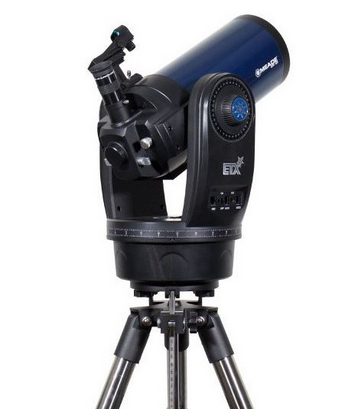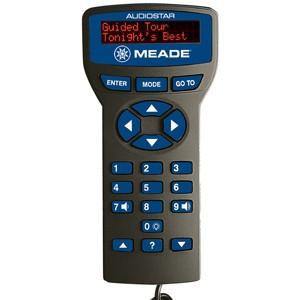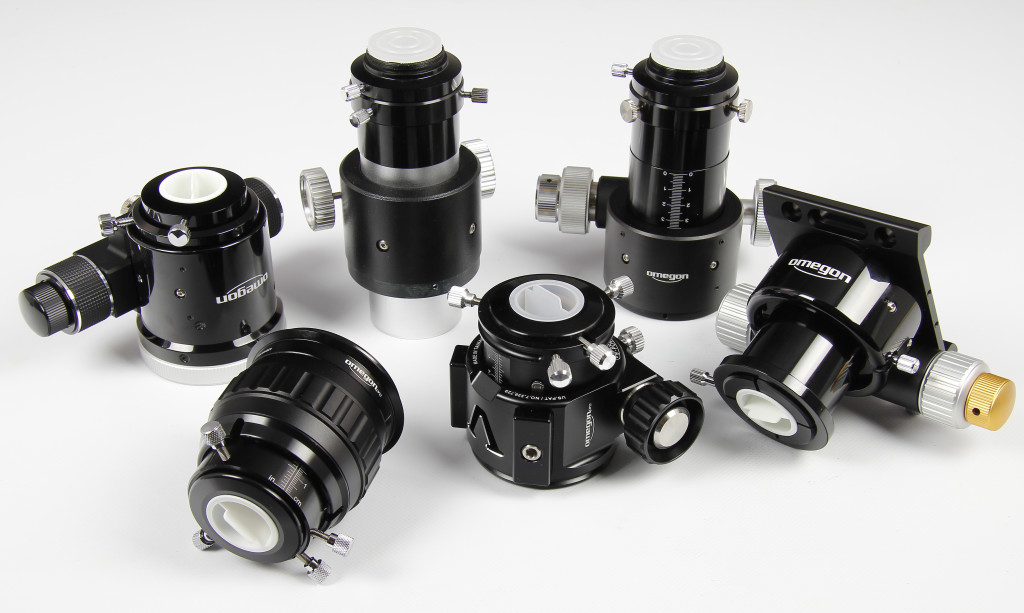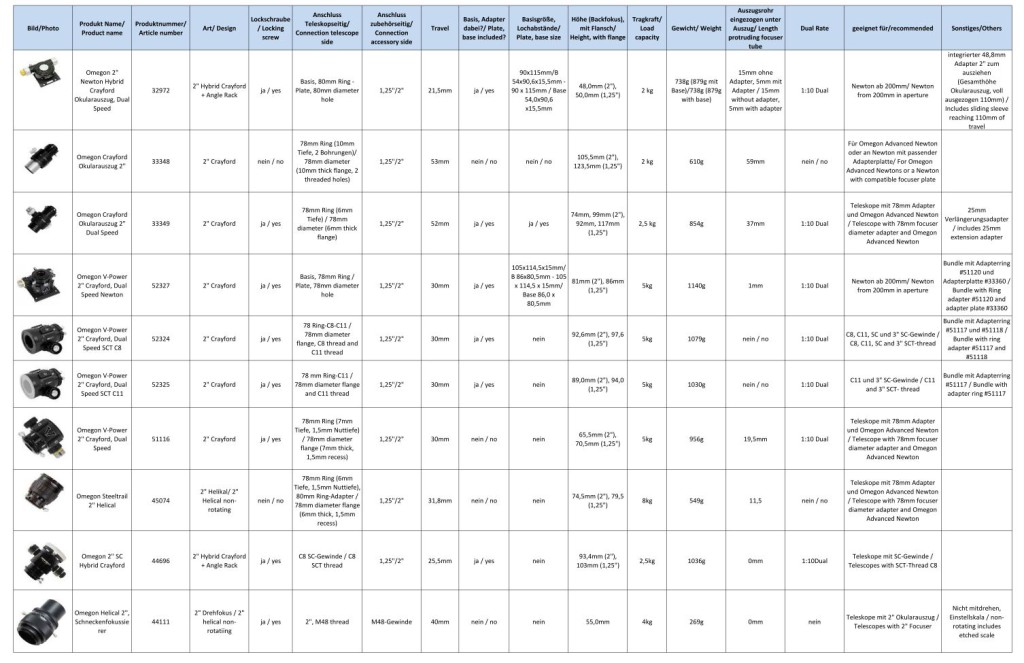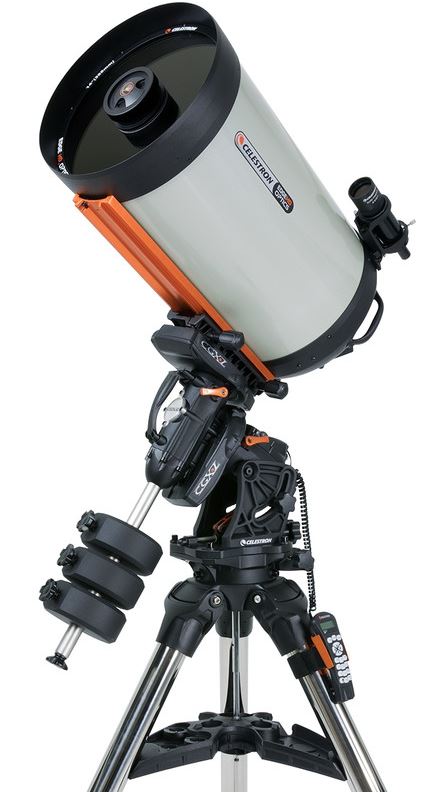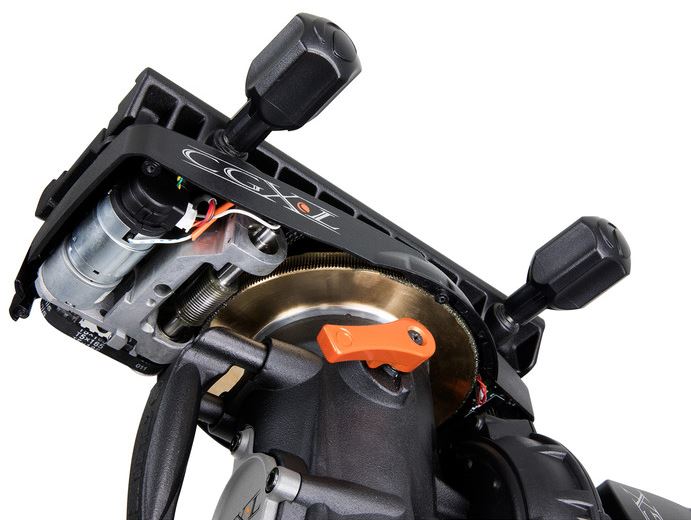It is available again, the ETX-125 from Meade. Easy to transport, versatile in use and computer controlled – this made the ETX-125 a classic in the past!
The advantages of the Meade ETX-125:
- Compact Maksutov optics: Longer focal length despite the short tube. Ideal for watching the moon and planets, but also for observing nature in the daytime. The robust Maksutov is stable in adjustment and, due to the closed tube, has a well protected mirror.
- With its opening of 127 millimetres, it is the biggest optics of the ETX series and also suitable for watching objects beyond our solar system: The Orion nebula, the big star cluster M13 in the Hercules constellation, and many other objects.
- The optical tube is fixed in a bracket mount. It reliably carries the optical system, its motors in both axes align it with the desired observation object and track the telescope in line with any rotation of the sky. The integrated battery compartment provides the required electric current for the motors during outdoor use. However, the ETX-125 can also be powered via an optionally available power supply unit.
- The tube is actually fixed in the fork, but the fork can be removed from the tripod for easier transportation. The steel pipe tripod carries the telescope without any negative wobbling. Another special feature: The tripod comes with an integrated equatorial wedge. This makes the azimuthal bracket mounting an equatorial GoTo mount, as is needed for astro photography.
And all this for a fair price!
The Meade ETX-125 is a GoTo telescope. This means that it is equipped with computer control, which makes it possible for beginners to find and identify objects in the sky.
The telescope is controlled via the new AudioStar-Handbox:
With AudioStar, you can choose from 30,000 celestial objects. However, the control also suggests objects for watching. A special feature of AudioStar is the audio output. It provides interesting information about the chosen object – however, only in English.
The compact, robust and computer controlled Meade ETX-125 also convinces in its new design!

